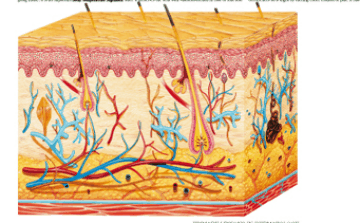One of the most commonly occurring and least talked about feminine concerns is feminine odor. We all feel embarrassed to admit that it happens to us, but the truth is that it is completely normal. The scent originates from vaginal secretions and can vary throughout the month.
Listed here are five causes of feminine odor-
- Sexually Transmitted Diseases
 One of the diseases that causes feminine odor is Trichomoniasis which is a sexually transmitted infection caused by a parasite. In women, trichomoniasis can cause a foul-smelling vaginal discharge, genital itching and painful urination. Men who have trichomoniasis typically have no symptoms. Pregnant women who have trichomoniasis may be at higher risk of delivering their babies prematurely. To prevent reinfection with the organism that causes trichomoniasis, both partners should be treated.
One of the diseases that causes feminine odor is Trichomoniasis which is a sexually transmitted infection caused by a parasite. In women, trichomoniasis can cause a foul-smelling vaginal discharge, genital itching and painful urination. Men who have trichomoniasis typically have no symptoms. Pregnant women who have trichomoniasis may be at higher risk of delivering their babies prematurely. To prevent reinfection with the organism that causes trichomoniasis, both partners should be treated.
- Low level of feminine hygiene
Clean and dry feminine hygiene products such as cloths or napkins should be used. Where cloths are used it is important that they are regularly washed with soap and water and dried fully in the sun before the next use. Damp cloths can carry germs that can lead to infections. During menstruation, one should exercise good habits with regard to changing pads or tampons. Bathing regularly is an important part of maintaining good feminine hygiene. If this is not done, the bacteria that are naturally present can overpopulate the genital area and cause problems such as discharge and odor. Some gynaecologists do, however, recommend pH-balanced feminine washes.
- Bacterial vaginosis
 Bacterial vaginosis is also known as vaginal bacteriosis or Gardnerella vaginitis is a disease of the vagina caused by excessive bacteria. Common symptoms include increased vaginal discharge that often smells like fish. The discharge is usually white or gray in color. Burning with urination may occur. Itching is uncommon. BV is caused by an imbalance of the naturally occurring bacteria in the vagina. There is a change in the most common type of bacteria and a hundred to thousand fold increase in total numbers of bacteria present. Usually treatment is with an antibiotic, such as clindamycin or metronidazole. These medications may also be used in the second or third trimesters of pregnancy. However, the condition often recurs following treatment. Probiotics may help prevent re-occurrence. It is unclear if the use of probiotics or antibiotics affects pregnancy outcomes.
Bacterial vaginosis is also known as vaginal bacteriosis or Gardnerella vaginitis is a disease of the vagina caused by excessive bacteria. Common symptoms include increased vaginal discharge that often smells like fish. The discharge is usually white or gray in color. Burning with urination may occur. Itching is uncommon. BV is caused by an imbalance of the naturally occurring bacteria in the vagina. There is a change in the most common type of bacteria and a hundred to thousand fold increase in total numbers of bacteria present. Usually treatment is with an antibiotic, such as clindamycin or metronidazole. These medications may also be used in the second or third trimesters of pregnancy. However, the condition often recurs following treatment. Probiotics may help prevent re-occurrence. It is unclear if the use of probiotics or antibiotics affects pregnancy outcomes.
- Pelvic inflammatory disease
Pelvic inflammatory disorder (PID) is an infection of the upper part of the female reproductive system namely the uterus, fallopian tubes, and ovaries, and inside of the pelvis. Often there may be no symptoms. Signs and symptoms, when present may include lower abdominal pain, vaginal discharge, fever, burning with urination, pain with sex, or irregular menstruation. Untreated PID can result in long term complications including infertility, ectopic pregnancy, chronic pelvic pain, and cancer. The disease is caused by bacteria that spread from the vagina and cervix. Treatment depends on the infectious agent and generally involves the use of antibiotic therapy. If there is no improvement within two to three days, the patient is typically advised to seek further medical attention. Hospitalization sometimes becomes necessary if there are other complications.
- Yeast infection
Vaginal yeast infections are common. About 75% of women will have a vaginal yeast infection at least once in their lifetime. Yeast infections, sometimes called candidiasis, develop where a moist environment encourages growth of the yeast fungus, such as the genitals. One is advised to seek medical attention.











